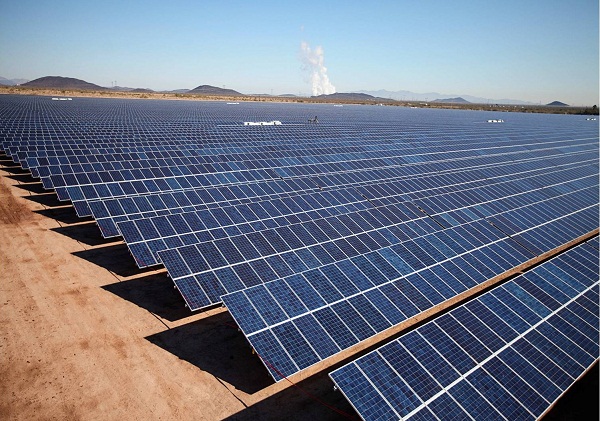Generation of electricity from solar power systems rose dramatically in the United States last year, rocketing up from 1,818 gigawatt-hours in 2011 to 4,342 GWh in 2012, according to the government’s energy-number crunchers.
To put that in some perspective: The average U.S. household uses around 10,000 kilowatt-hours of electricity each year, so solar’s output equaled the total electricity use of about 434,000 average households. Solar’s 138.9 percent growth rate also made it far and away the biggest gainer among all generating technologies, renewable or not. Wind grew by 16.6 percent to 140,089 GWh.

On the dirty side of the ledger, coal continued its slide, down 12.5 percent for 2011, while natural gas surged, up 21 percent in 2012. Coal’s proportion of the nation’s electrical generation thus fell from 42.3 percent to 37.4, while natural gas went from 24.7 percent to 30.4 percent.
But back to solar, because this is an important point: The total in the EIA’s February Electric Monthly Report [PDF], which includes data through December 2012, represents less than half of solar’s true generation. That’s because it only counts large-scale generating facilities, generally those at 1 megawatt and larger, not the systems that Americans increasingly see on homes and businesses.
The 2012 data for this everyday solar isn’t yet available, but last June the EIA forecast that “small-scale, customer-sited installations like rooftop solar (or, distributed generation)” would account for 6,760 GWh in 2012. Adding that to the 4,342 reported this week gives a ballpark total U.S. solar generation of 11,102 GWh in 2012.
True, that number, assuming it verifies later this year when all the data is gathered, is a tiny portion of total U.S. electricity generation, a mere 0.27 percent of the 4,054,485 GWh reported by the EIA for 2012. But it is a 49 percent increase from solar’s 2011 total of 7,454 GWh reported in the U.S. Department of Energy’s Renewable Energy Data Book.
Driving solar’s big gains were huge projects in the West, including the Agua Caliente plant in Arizona, at some 250-megawatts the largest PV plant in the world; and Mesquite Solar 1, a 150-MW solar array, also in Arizona. Both plants were backed by the U.S. Department of Energy’s loan guarantee program and are selling their power through long-term agreements with utilities.
With geothermal generation also up 9.9 percent and biomass up 1.6 percent, total non-hydro renewable energy generation in the U.S. grew by 12.8 percent in 2012 and accounted for 5.4 percent of the country’s electricity. If you added in hydro’s 6.8 percent contribution, renewables would be at 19.6 percent.